All products featured are independently chosen by us. However, SoundGuys may receive a commission on orders placed through its retail links. See our ethics statement.
Google Pixel Buds A-Series vs Samsung Galaxy Buds Plus
Published onAugust 5, 2023


The joys of true wireless earbuds are not just for iPhone users and their Apple AirPods. Both the Samsung Galaxy Buds Plus and Google Pixel Buds A-Series seamlessly integrate with Android devices and have a host of other nifty tricks. However, as is true with all products, each headset has its drawbacks. Let’s explore which of these true wireless earbuds is the better pick for you.
Editor’s note: this article was updated on August 5, 2023, to update formatting and to mention spatial audio on the Google Pixel Buds Pro.
Does the Google Pixel Buds A-Series or Samsung Galaxy Buds Plus have a better design?
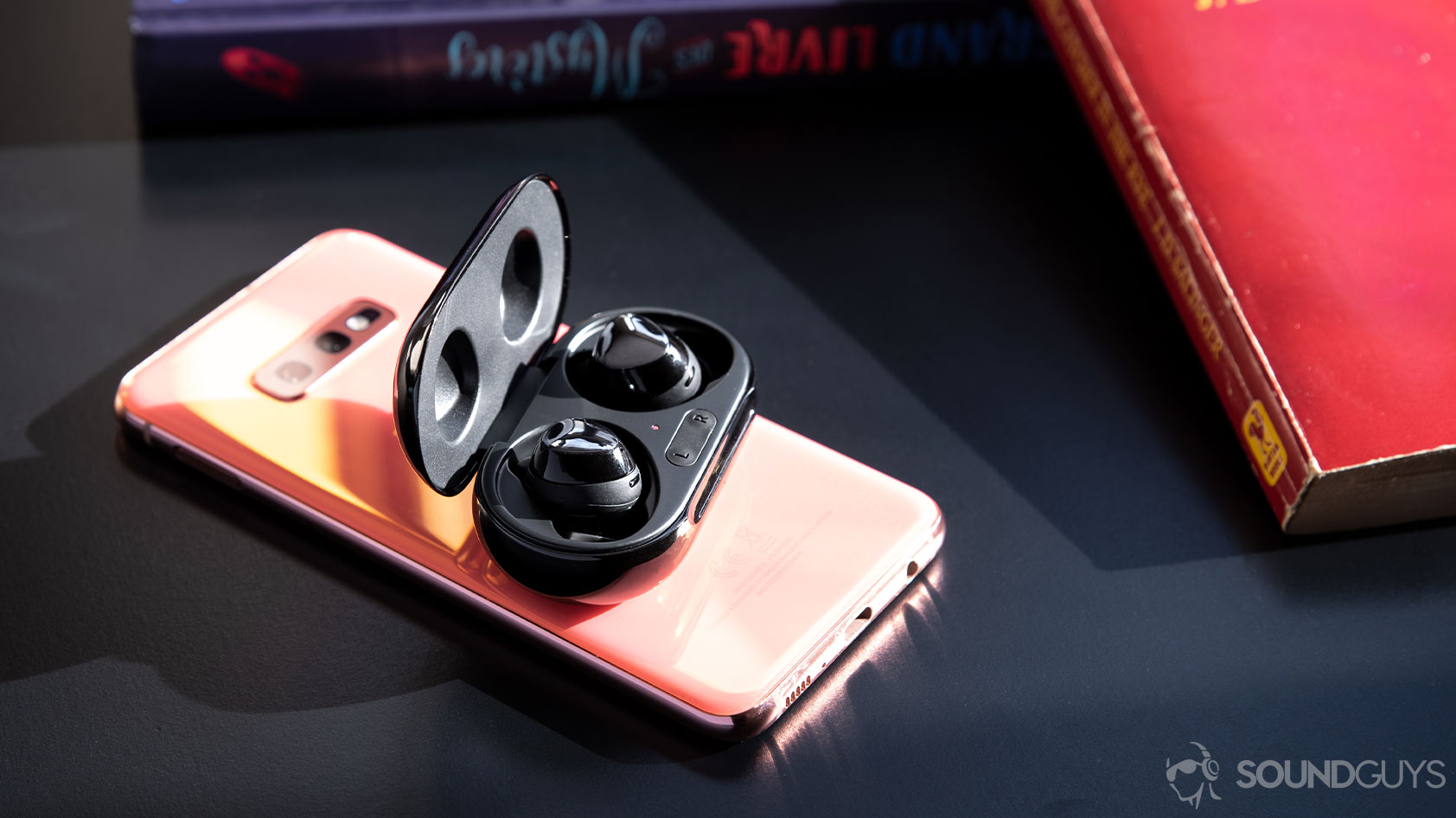
The Samsung Galaxy Buds Plus case and earbuds are all lightweight thanks to the plastic build. Samsung provides three pairs of interchangeable silicone ear tips and stabilizing ear stays, so most listeners should be able to find a comfortable, well-isolating fit with ease. The Galaxy Buds Plus sports an IPX2 rating which means the buds will resist your sweat. You can control playback and field calls from the touch panel on either earbud. If you want, you can even remap the controls in the Galaxy Wearable app (iOS and Android).
Google Pixel Buds A-Series is also lightweight both in and out of its charging case. The buds have a more impressive IPX4 rating and useful, albeit ugly stabilizing wing tips. This headset is a strong contender as your next pair of workout buds. Though the stabilizing wings are one-size-fits-most, the Pixel Buds A-Series includes three interchangeable sets of silicone ear tips. You control the Pixel Buds A-Series through various taps on the buds’ touchpads, though you cannot control volume or customize the controls.
Both earbuds have Android-specific software features
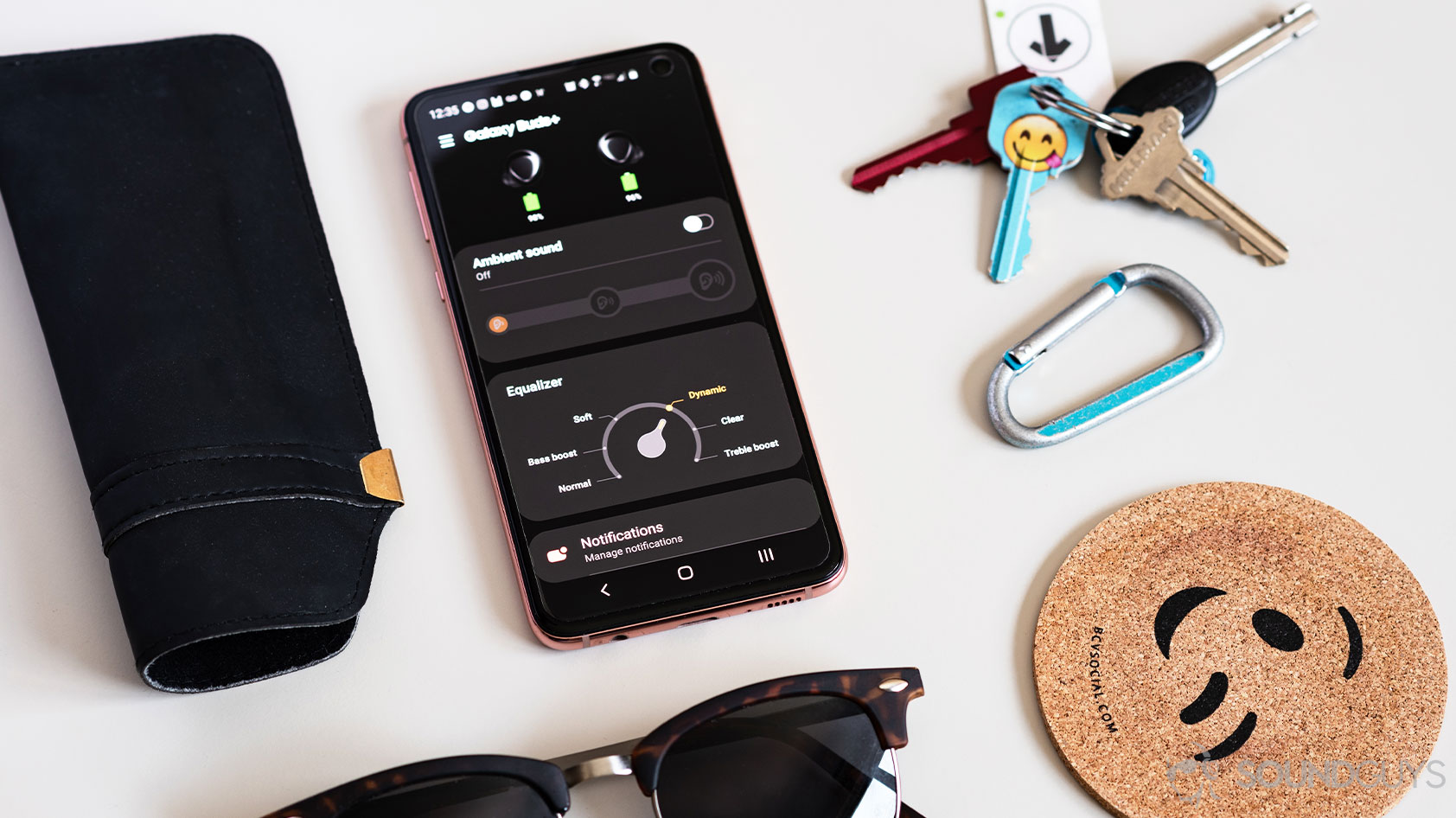
If you download the Samsung Galaxy Wearable app on an Android device and remap the tap gesture, you have the option to assign a tap-and-hold gesture to automatically play Spotify’s recommended songs (Android only). The Galaxy Wearable app also provides access to ambient sound adjustments that amplify your surroundings, find my earbuds, EQ presets, and beta testing for features like Game Mode. While the Galaxy Wearable app is only available for Android, the Samsung Buds app for iOS affords many of the same features to iPhone users. For example, iPhone users can enable ambient sound mode, access the equalizer, and use the find my earbuds feature.
The Pixel Buds app is available for Android only and provides battery reports of each earbud and the case, as well as features like automatic ear detection, find my device, and Bass Boost. The major downside of downloading the app is that Google collects your personal data, but nowadays a great number tech companies do. On the other hand, a perk of this being a Google product is that you’ll be able to access Google Assistant with just your voice.
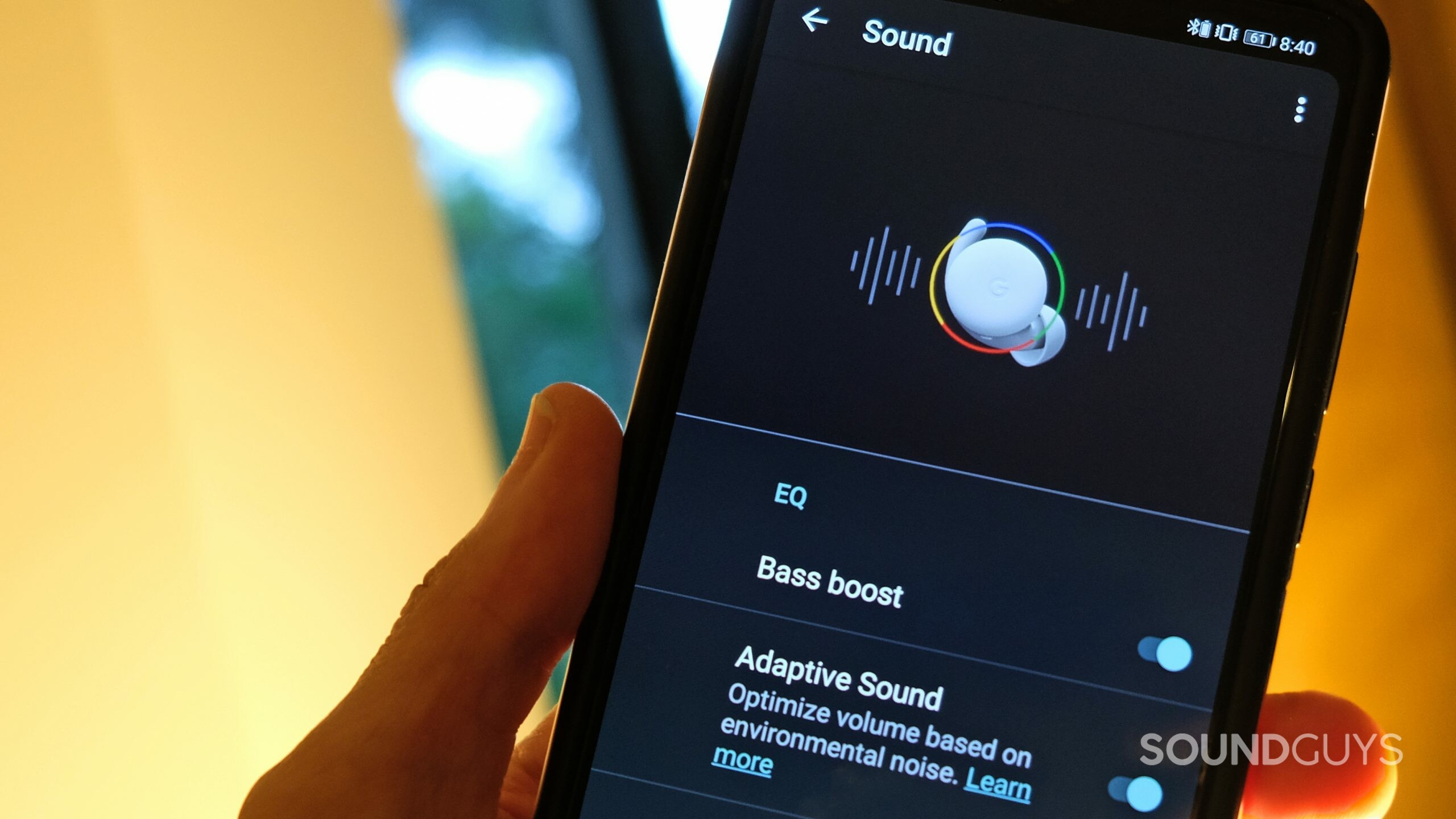
One notable feature of the A-Series is Adaptive Sound, but its utility is somewhat questionable. Rather than actively cancel noise, the Pixel Buds A-Series automatically adjusts your media’s volume depending on the level of environmental noise around you. While it has its uses, it can make your music sound “off,” if you’re expecting a big bass boom, but the Adaptive Sound immediately lowers the volume once you exit a noisy train car.
The only way to disable Adaptive Sound mode is to download the Pixel Buds app, so if you have an iPhone you’re out of luck here.
Are the Galaxy Buds Plus and Pixel Buds A-Series easy to pair?
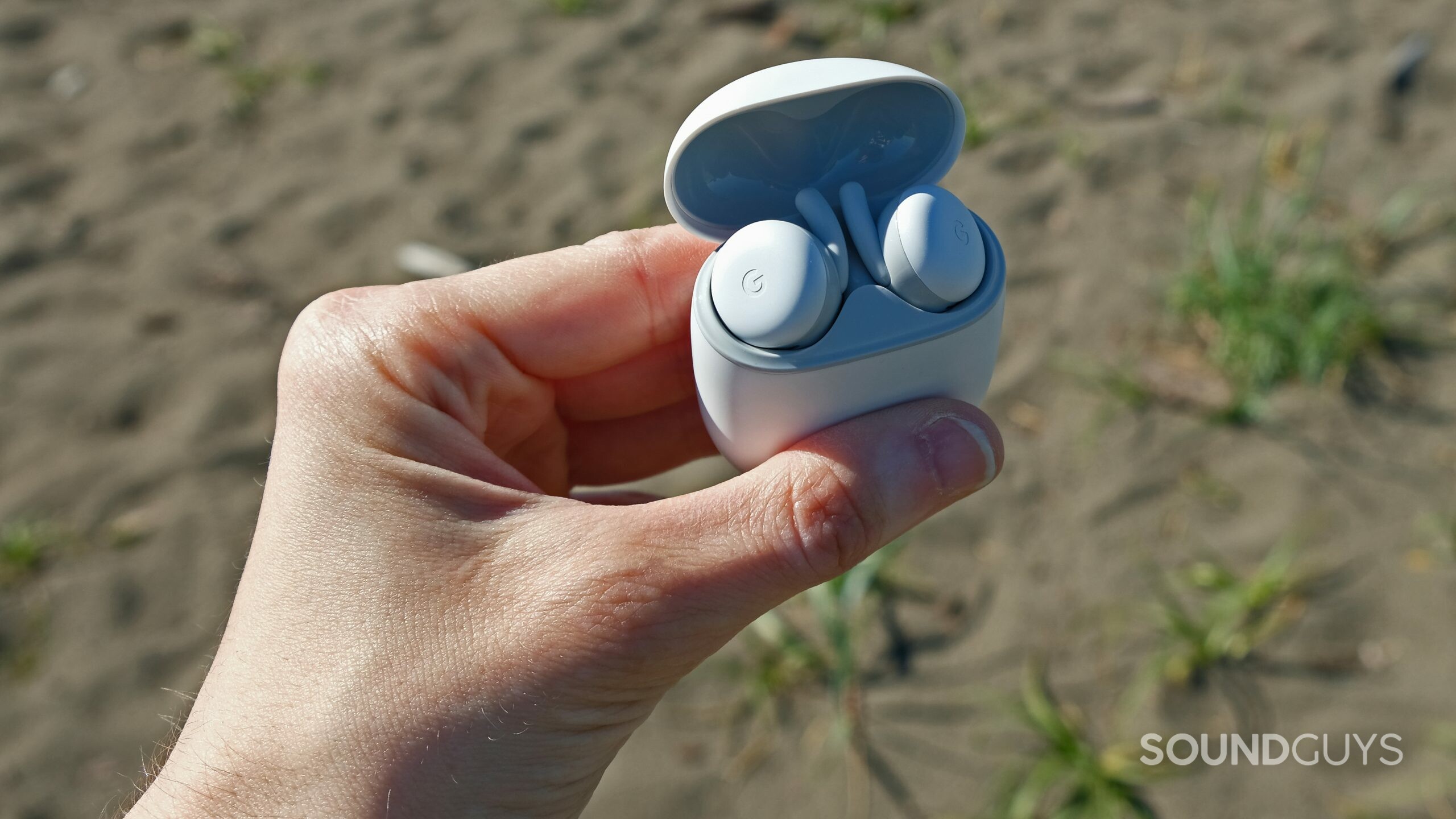
Pairing the Samsung Galaxy Buds Plus is streamlined if you have a Samsung Galaxy Smartphone with Android 7.1.1 and the SmartThings app installed. If you don’t fulfill these requirements, you’ll just need to remove the buds from their case to initiate pairing mode. These Bluetooth 5.0 earbuds supports a handful of Bluetooth codecs: the Samsung Scalable Codec, AAC, and SBC. Though the Galaxy Buds Plus doesn’t have Bluetooth multipoint functionality, it remembers multiple saved devices and can switch between them without the need for you to manually disconnect the buds each time.
You can only disable the Pixel Buds' Adaptive Sound feature with an Android device.
To pair the Google Pixel Buds A-Series, open the case and hold down on the button until the indicator light flashes yellow and white. From here you should be able to select the A-Series from your phone’s Bluetooth menu to pair it. The new Pixel Buds A-Series uses Bluetooth 5.0, which isn’t necessarily behind the times, but some products out there are using Bluetooth 5.2. The buds use only AAC and SBC for codecs, which is unfortunate since AAC doesn’t perform consistently across Android devices. Most listeners won’t notice major differences between codecs, but aptX inclusion would’ve been nice for higher quality listening.
Which pair of earbuds has better battery life?

The Samsung Galaxy Buds Plus supports Qi wireless charging and has a long battery life, topping out at 11 hours, 44 minutes. It also has exceptionally fast quick-charging capabilities: 3 minutes in the case provides 60 minutes of music playback. The case stores one additional charge cycle, so you shouldn’t run into issues with battery life especially if you have a Samsung Galaxy smartphone and can take advantage of Wireless PowerShare.
When subjected to our battery life test, the Pixel Buds A-Series lasts 4 hours, 44 minutes on a single charge. While this is not fantastic, it’s pretty average for true wireless earbuds. You can quick-charge the buds in the case for 15 minutes to get 180 minutes of listening or 90 minutes of phone calls. The Google Pixel Buds A-Series charges via USB-C and, despite the magnetic charging case, is not Qi-wireless compatible.
How well does each headset block out sound?
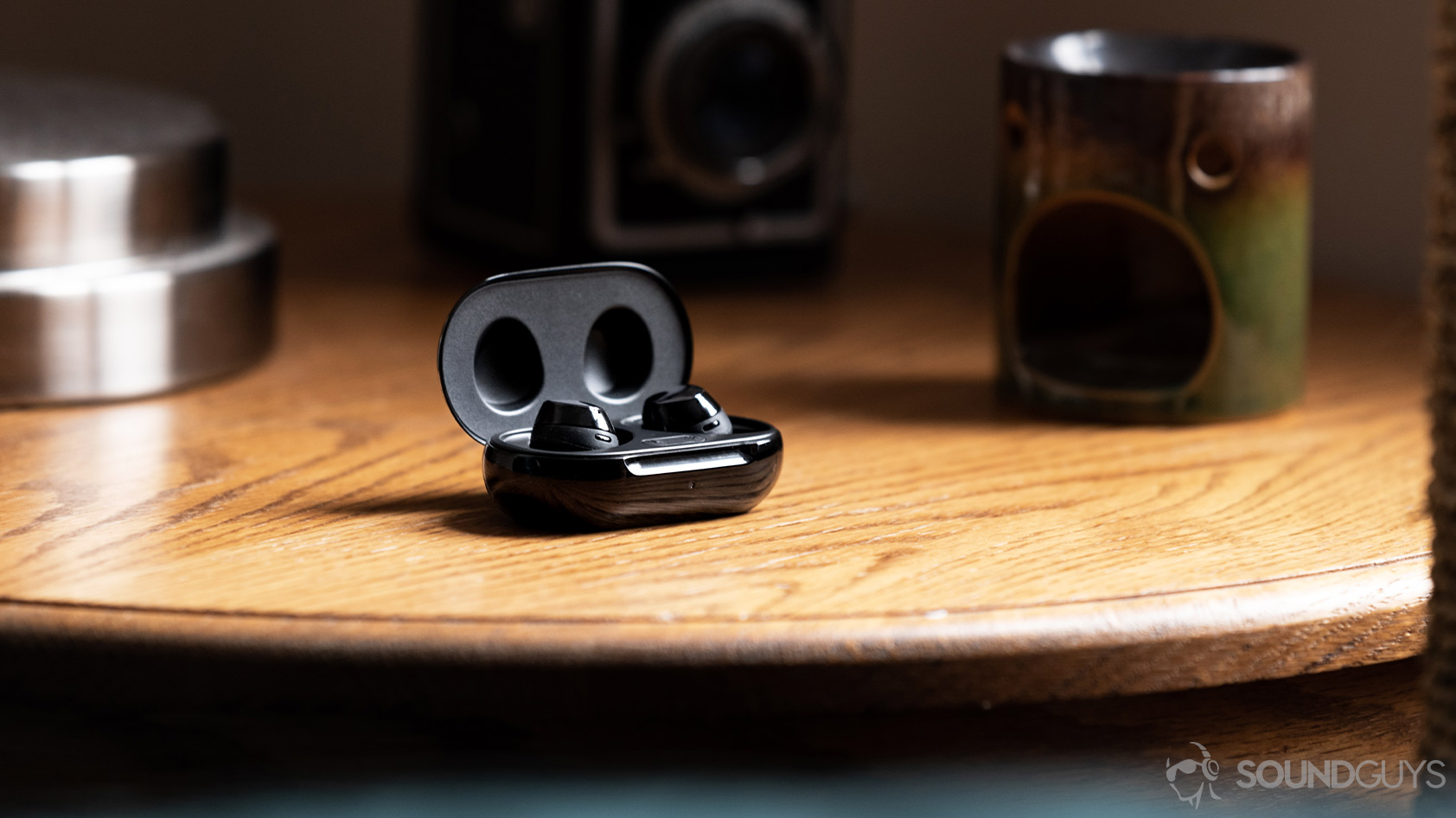
Thanks to its interchangeable ear tips and wing tips the Samsung Galaxy Buds Plus isolates you from high-frequency sounds above 1kHz (like people talking and the clang of dishware). Though low-frequency noises will still be heard when wearing the earphones.
The Google Pixel Buds A-Series isolates ambient noise about as effectively as you’d expect for a pair of standard in-ears. Higher frequencies will be blocked out somewhat, but not nearly as much as they are with the Galaxy Buds Plus. Lower frequencies will hardly be silenced at all, but again, this is typical for non-ANC earphones.
Bear in mind that these isolation readings were taken under ideal conditions. In order to experience similar performance, you need to find the right ear tips for you. Neither headset’s software includes an ear tip fit test, but if you don’t know where to start, read up on our ear tip fitting guide. Neither headset offers active noise canceling; for that, you’ll need to get the Samsung Galaxy Buds 2 Pro or Samsung Galaxy Buds 2 or consider any one of the best noise canceling earphones around.
Hold up! Something’s different:
This article’s frequency response and isolation charts were measured with our old testing system. We have since purchased a Bruel & Kjaer 5128 test fixture (and the appropriate support equipment) to update our testing and data collection. It will take a while to update our backlog of old test results, but we will update this review (and many others!) once we’re able with improved sound quality measurements, isolation performance plots, and standardized microphone demos. These will be made obvious with our new chart aesthetic (black background instead of white). Each new mic sample begins with the phrase, “This is a SoundGuys standardized microphone demonstration …”
Thank you for bearing with us, and we hope to see you again once we’ve sorted everything out.
Does the Google Pixel Buds A-Series or Samsung Galaxy Buds Plus sound better?

The Google Pixel Buds A-Series has some issues with volume. Though the Adaptive Sound feature is supposed to normalize the buds’ output depending on the level of environmental noise, the baseline volume level can be really, really low if your settings aren’t perfect. When this happens, the A-Series is roughly 25dB quieter than the average pair of true wireless earbuds, at least on some devices. We show you how to diagnose this issue in our full Google Pixel Buds A Series review.
Volume issues aside, the Pixel Buds A-Series default frequency response is odd: it heavily under-emphasizes bass and low-midrange notes, which works well for conference calls. The treble dips decrease sibilance (harsh ‘s‘ sounds) and the low bass notes aren’t key to conveying human speech. When listening to music, we’d recommend enabling the Bass Boost feature, which will amplify lower tones and give your music a more consumer-friendly sound. That, however, brings in a few issues since the bass notes are then twice as loud as mids, making it hard to hear vocals and fundamental string instrument notes.
AKG tuned the Samsung Galaxy Buds Plus and each earbud houses a dedicated woofer and tweeter. You’ll find that bass tones are gently boosted to bring out that desired oomph. Mids and highs are minimally amplified within specific frequency ranges to bring out important fundamental notes in music, particularly around middle-C. If you don’t like the built-in sound signature of the Buds Plus, you can experiment with the in-app EQ presets.
Does the Google Pixel Buds A-Series or Samsung Galaxy Buds Plus have a better mic for phone calls?
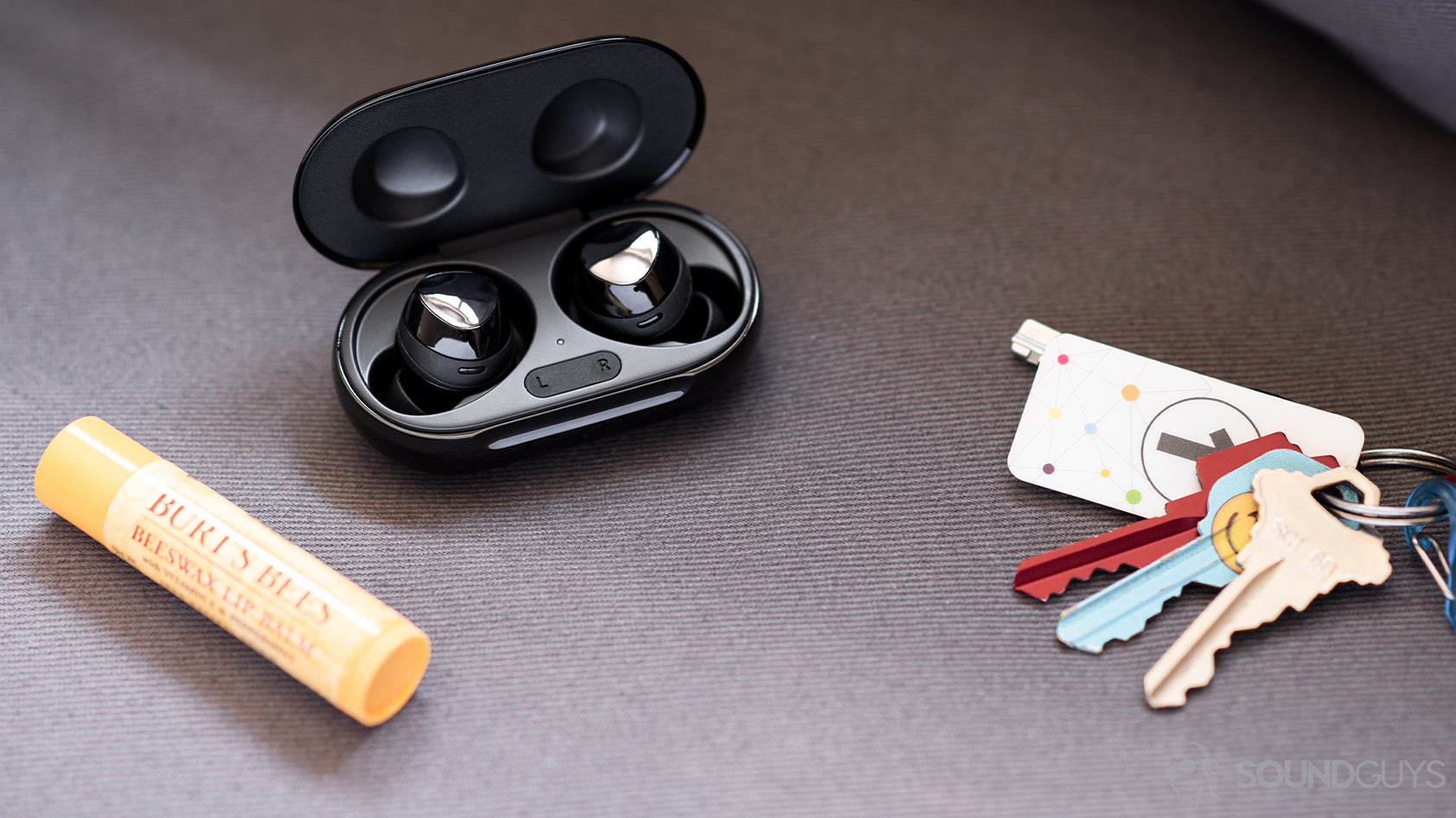
The Samsung Galaxy Buds Plus has a very good microphone setup. It contains two outer microphones and one inner microphone which work together to reject ambient sound and hone in on your voice.
The Google buds’ mic does a pretty good job rejecting environmental sound while you’re speaking, but it sometimes results in your voice cutting out as well. When speaking through it in a quiet environment, most users will find that it reproduces their voices relatively accurately.
Samsung Galaxy Buds Plus microphone sample (Non-standardized):
Google Pixel Buds A-Series microphone sample (Non-standardized):
Which microphone sounds better to you?
Should you buy the Samsung Galaxy Buds Plus or Google Pixel Buds A-Series?
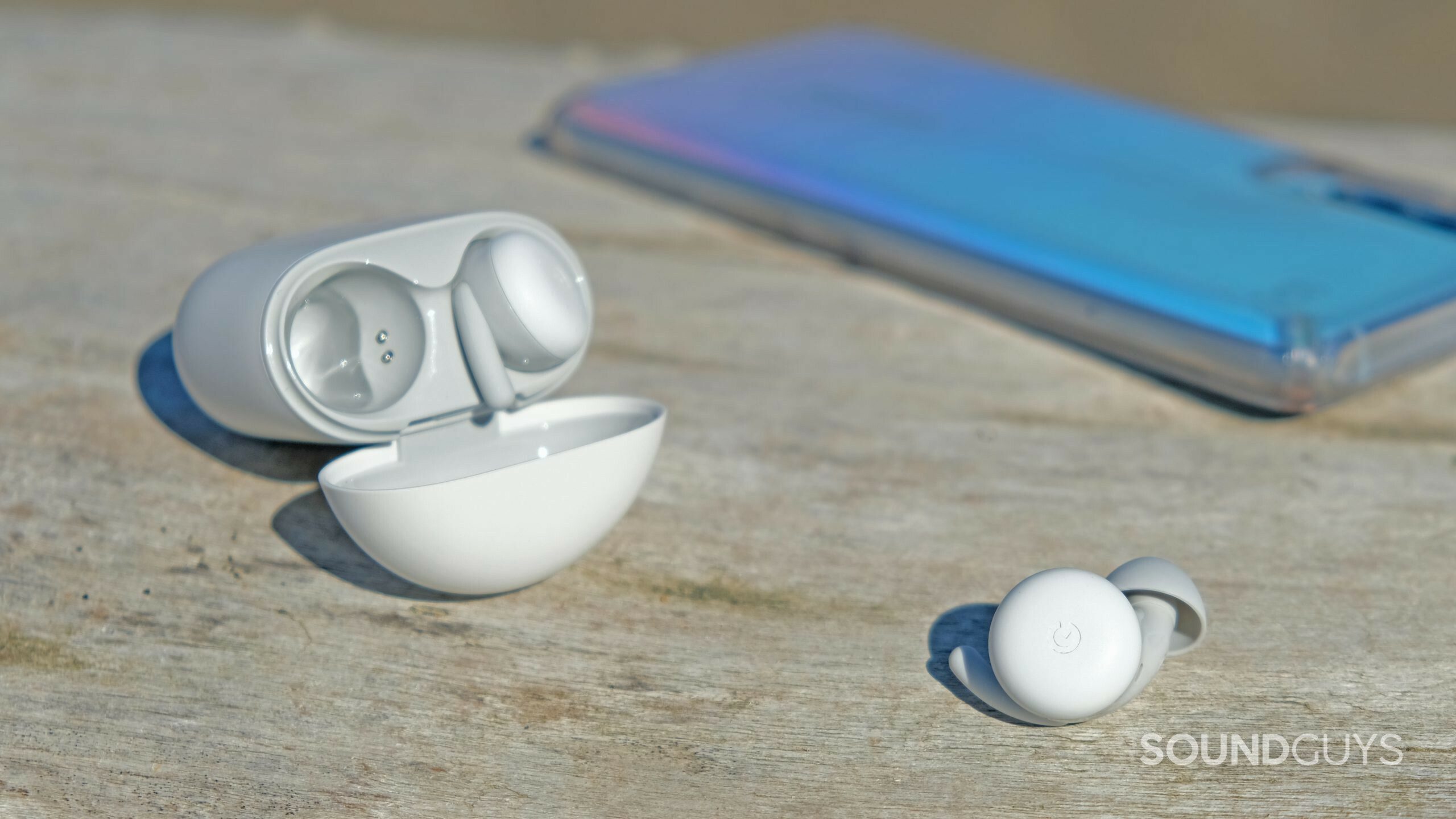
The primary selling point of both the Samsung Galaxy Buds Plus and Google Pixel Buds A-Series is each headset’s Android integration features. Both earbuds fall in a similar price range and offer similar creature comforts, but unfortunately, Samsung has discontinued the Galaxy Buds Plus. This leaves you with the Google Pixel Buds A-Series if you want something more futureproof. With Google’s budget earphones, you get an IPX4 rating and other perks like voice-activated Google Assistant. Some people might really like the Adaptive Sound mode offered by the Google Pixel Buds A-Series. And keep in mind that iPhones users won’t be able to disable it, or alter the EQ preset.
If you can find the Galaxy Buds Plus, it may still be worth purchasing for its battery life, isolation, and Spotify integration though.

Low price
Multiple fun colors

Extended battery life
Good fit
What should you get instead of the Google Pixel Buds A-Series and Samsung Galaxy Buds Plus?
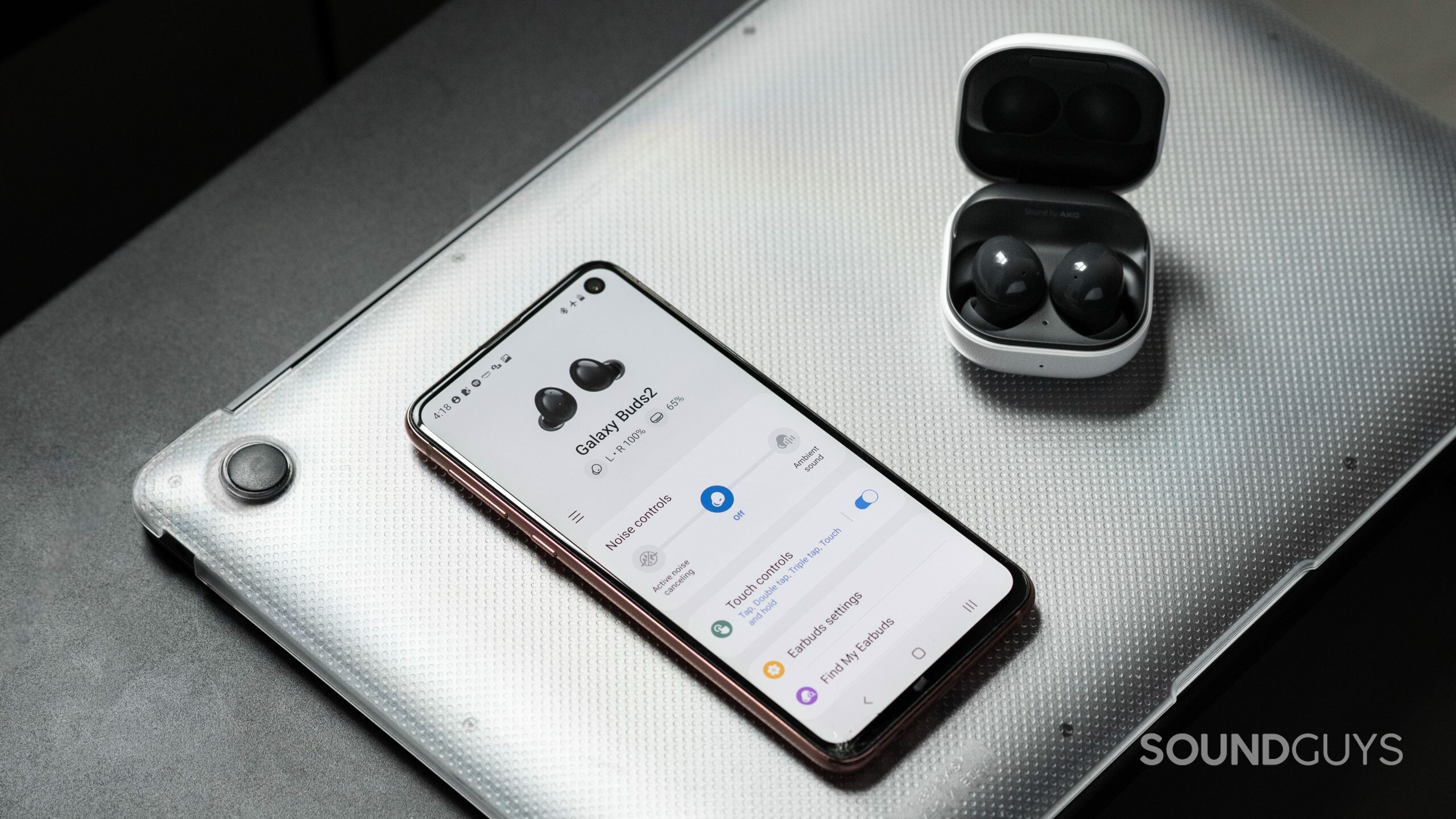
Unless you’ve found a great clearance deal somewhere, you’ll probably want to take a look at some of the newer Samsung offerings, such as the midrange Samsung Galaxy Buds 2 ($99 at Amazon). Basically, the design improves on basically every feature of the Galaxy Buds Plus, by offering optional active noise canceling (ANC), very similar functionality, and a good default sound. Like the Galaxy Buds Plus, the touchpad is still too sensitive.
To remedy the hypersensitive touch controls, you’ll need to pay more for the Samsung Galaxy Buds 2 Pro, ($179 at Amazon) which expands on the Galaxy Buds 2, by upping the ANC performance. The design ditches the jewel tones of the Galaxy line for a more austere matte textured plastic, but otherwise is functionally not so dissimilar from the Galaxy Buds 2.
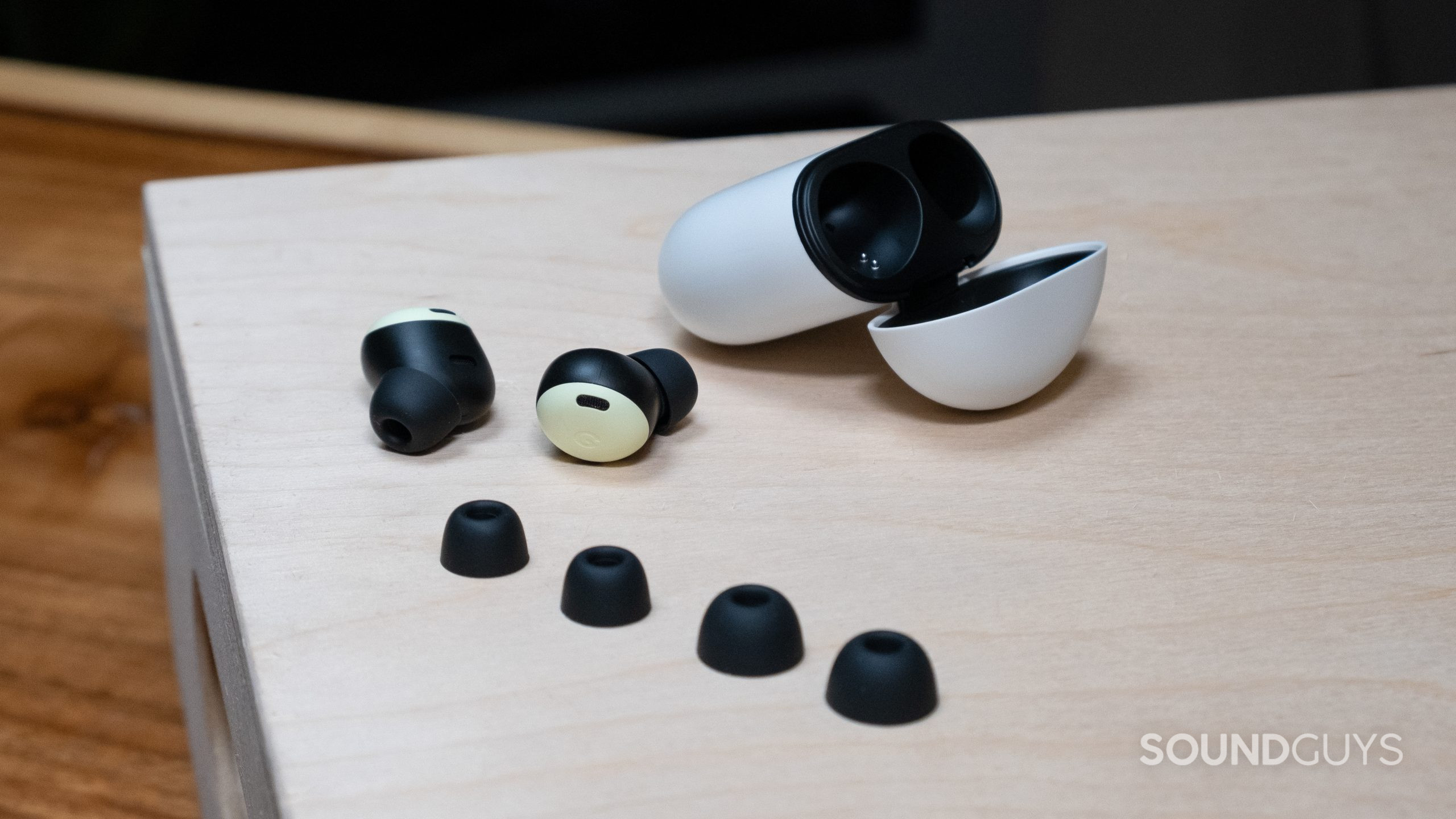
Google fans can also consider the ANC-capable Google Pixel Buds Pro, which retails for $199 at Amazon double the current price of the Pixel Buds A-Series. The “Pro” upgrade trades Adaptive Sound for Volume EQ and ANC. Arguably, Volume EQ may be superfluous, but it’s not as disruptive as Adaptive EQ. Onboard ANC is a welcomed addition too: while the Buds Pro is not as effective as the Galaxy Buds 2 Pro, it’s still very good. You wouldn’t want to take these buds for a run because Google removed the stabilizers found on the A-Series, so the fit can feel loose for some ears. Nevertheless, the battery life is quite good considering how ANC can really drain batteries. Additionally, these come with spatial audio with head tracking when paired to a Pixel phone.
Of course, if you’ve somehow got this far and use an Apple iPhone, ignore the above list and check out some iPhone-friendly earbuds.
Frequently asked questions
Neither is the ideal mate to your iPhone, given that some features are only accessible using Android apps. For instance, Adaptive Sound for the Pixel Buds A-Series is only available to control in the Android only app. With that said, more, but not all, features can be accessed on iPhone with the Galaxy Buds Plus. Check out some alternatives for your iPhone.
First off update your buds, because that ought to fix the problem.
- Put your buds into the case.
- Open your Pixel Buds app.
- Tap More settings, then tap Firmware update.
- Hit Update available.
If that doesn’t solve the problem, you’ll need to go into Developer Settings. You can find more directions in our review.